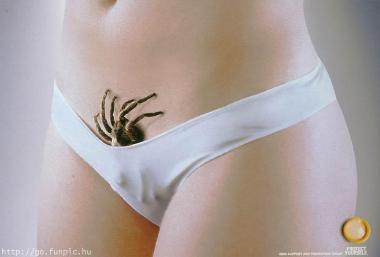In New Jersey, laser or IPL hair removal can only be performed by a physician, and the term physician is defined as a person holding a plenary license issued by the New Jersey State Board of Medical Examiners.
New Jersey has consistently recognized that the use of a laser or light based device on a patient’s skin can only be used by a licensed physician. The use of a laser or light based device in a physician’s office is regulated by the State Board of Medical Examiners.
The State Board of Medical Examiners reviewed prior inquiries to determine whether non-physicians can use laser or IPL devices for hair removal. According to published Minutes, the Board has determined that only licensed physicians can use such devices for hair removal. On June 20, 2003, the Physician Assistant Advisory Committee of the New Jersey Board of Medical Examiners expressly stated that laser hair removal can only be performed by a physician.
The June 20, 2003 minutes stated:
b. The Committee reviewed a fax from Wanda Cooper, Sona International Corporation inquiring (1) as to whether a physician assistant is considered a nurse and therefore subject to the ruling of the Board of Medical Examiners regarding Thermolase laser; (2) as to whether the Board of Medical Examiners governs the Physician Assistant Committee and (3) whether a physician assistant can perform laser hair removal under the direct supervision of a physician.
As to the first question, it was the consensus of the Committee that physician assistants are not nurses.
As to the second question, the Board of Medical Examiners governs the Physician Assistant Advisory Committee.
As to the third question,consistent with the determination made by the Board of Medical Examiners, physician assistants may not perform Thermolase laser hair removal as these procedures are deemed the practice of medicine and may not be delegated to a nurse or any other licensed health care professional other than a "physician".
A letter will be sent to Ms. Cooper so advising along with a copy of the statutes and regulations which govern the practice of physician assistants in the State of New Jersey.
On September 19, 2003, the Physician Assistant Advisory Committee of the New Jersey Board of Medical Examiners expressly stated that laser hair removal can only be performed by a physician, and that IPL photofacial or IPL procedures would be referred to the Medical Board to determine their position.
The Board stated:
c. The Committee reviewed a fax from Bryan A. Manhardt, PA-C, Allergy Asthma & Sinus Center, Somerville, NJ 08876, inquiring as to whether procedures for Microderm abrasion, Laser hair removal, IPL photofacial, Botox injections and Collagen injections can be performed under the supervision of a physician. The Committee determined, as to Laser hair removal and Botox Injections, consistent with the determination made by the Board of Medical Examiners, physician assistants may not perform these treatments as these are deemed the practice of medicine and may not be delegated to a nurse or any other licensed health care professional other than a "physician".
As to procedures Microderm abrasion, IPL photofacial and Collagen injections there is no policy statement from the Board of Medical Examiners at this time. A letter will be sent to Mr. Manhardt so advising, along with a copy of the draft proposal as it relates to these procedures which is not yet law.
d. The Committee reviewed a letter from Dr. Edwin P. Schulhafer, Allergy, Asthma & Sinus Center, inquiring as to whether nurses, physician assistants or nurse practitioners in the State of New Jersey can perform the following procedures: Laser hair removal; Laser skin rejuvenation; Endomology; Intense Pulse Light (not a laser but a visible light); Botox injections; Collagen injections and Microdermabrasion.
It was the consensus of the Committee that, as to Laser hair removal and Botox Injections consistent with the determination made by the Board of Medical Examiners, physician assistants may not perform these treatments as these are deemed the practice of medicine and may not be delegated to a nurse health care professional other that a "physician". The Committee has no jurisdiction over nurses and nurse practitioners. This inquiry will be referred to the Board of Nursing.
As to laser skin rejuvenation, Endomology, Intense pulse light (not a lser but a visible light), Collagen injections and Microdermabrasion, there is no policy statement from the Board of Medical Examiners at this time. A letter will be sent to Dr. Schulhafer so advising along with a copy of the draft proposal as it relates to these procedures which is not yet law.
On April 16, 2004, the Physician Assistant Advisory Committee of the New Jersey Board of Medical Examiners expressly stated that IPL devices used for hair removal can only be performed by a physician.
The published minutes from April 16, 2004 stated:
b. The Committee reviewed a letter from Jason Staback, PA-C, inquiring as to whether it is legal for physician assistants in the State of New Jersey to use IPL (Intense pulse light) device for the purpose of hair removal, made by Palomar. He stated that it is categorized as a category 2 device. It was the consensus of the Committee that a letter be sent to Mr. Staback advising based on the limited facts presented, consistent with the determination made by the Board of Medical Examiners, physician assistants may not perform laser treatments as these procedures are deemed the practice of medicine and may not be delegated to a nurse, or any other licensed healthcare professional other than a "physician". To the current time, the performance of microdermabrasion and glycolic acid peels have also been considered the practice of medicine but unlicensed personnel have been permitted to perform theses procedures under the supervision and direction of a physician . However, please be advised that the Board is further investigating this latter issue and obtaining opinions from appropriate expert professionals. If the Board promulgates a regulation in this regard in the future it will be noticed in the New Jersey Register. Mr. Staback will be so advised.
On September 17, 2004, the committee stated:
The Committee reviewed a letter from Thomas Geary, PA-C, inquiring as to whether a physician assistant in the State of New Jersey can perform hair removal, tatoo removal and resurfacing if the supervising physician is a D.O. The Committee determined that based on the limited facts presented, consistent with the determination made by the Board of Medical Examiners, physician assistants may not perform laser treatments as these procedures are deemed the practice of medicine and may not be delegated to a nurse, or any other licensed healthcare professional other than a "physician".
In New Jersey, a physician cannot delegate laser hair removal procedures, laser skin resurfacing, or laser skin rejuvenation, to a physician’s assistant, a nurse, or any other licensed healthcare professional other than a "physician", which is defined as a licensed medical doctor. This position was stated on October 21, 2005, May 18, 2007, and reaffirmed again in September 2007. See Minutes, Physician Assistant Advisory Committee, September 21, 2007.
As recently as January 15, 2008, the New Jersey Board of Nursing did not approve of a licensed practicing nurse to administer IPL therapy. The Nursing Board Minutes stated:
Re: Inquiry from Doug Doyle, Esq., questioning whether Licensed Practical Nurses may administer “intense light pulse” therapy.
The Committee reviewed the e-mail and an article regarding Intense Pulse Light Therapy (IPL). The article stated that “IPL systems work on the same principles as lasers in that light energy is absorbed into particular target cells with color (chromophores) in the skin. The light energy is converted to heat energy, which causes damage to the specific target area.”
The Board of Nursing does not have regulations regarding administration of intense pulse light. On November 16, 2004, the Board of Nursing discussed this issue and made a motion to refer the issue to the New Jersey Board of Medical Examiners concerning the use of medical light–emitting devices (Lasers).
Consistent with the Board’s decisions of November 16, 2004, the Committee recommends that Mr. Doug Doyle’s question be forwarded to the New Jersey Board of Medical Examiners for review and comments.
As of 2008, the New Jersey Board of Medical Examiners consistently has taken the position that the use of laser or IPL device is the practice of medicine.
You can search the website of the New Jersey Board of Medical Examiners to review meeting minutes to update the above research. http://www.state.nj.us/lps/ca/bme/minutes/bmemin.htm. And, you and your employer should consider consulting an attorney or the medical board in your state for further clarification.














